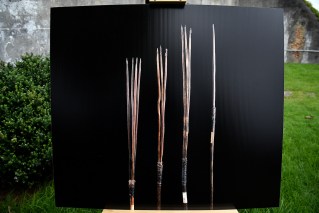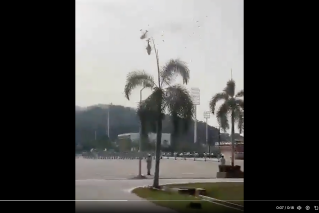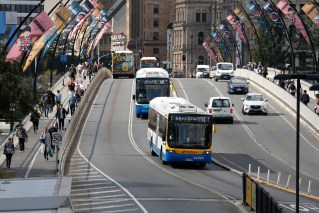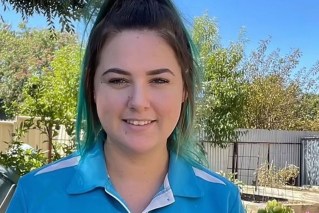Deaths from coronavirus in Australia have passed 500 – with most of them in Victoria – as politicians return to federal parliament after ten weeks.
Victoria recorded 17 more deaths on Sunday to lift the state’s pandemic tally to 415, four weeks since Australia first experienced a double-digit daily death count on July 26.
The national death toll is now 502, while Victorian fatalities have reached 415.
The two-week parliamentary sitting was due to start on August 4 but was cancelled because of the COVID-19 outbreak in Victoria.
Monday’s resumption heralds potentially the biggest shake-up in Parliament House since someone decided to put different coloured leather on the seats in each chamber.
It has been a while between drinks for politicians in Canberra.
Labor was livid the earlier August sitting week was cancelled, saying it wanted to debate COVID response measures.
With border stoushes, JobKeeper and JobSeeker changes, and the aged-care catastrophe in Victoria all unfolding since Parliament last met, expect this week to be a fiery one.

Politicians may be wearing masks in the chambers this week. Photo: AAP
But of most novelty value, at least, when elected representatives return to Parliament House on Monday for the first time in months will be the new toy to test out – video screens in the Senate and House of Representatives, allowing senators and MPs in lockdown to call from the comfort of their electorate offices.
On Friday, the federal Senate said it was 30 years to the day since the first televised address in the upper house.
After several months of brainstorming, negotiations and testing, the so-called ‘Zoom Parliament’ is finally in from Monday.
#OTD in 1990, Senate proceedings are televised for the first time, 34 years after the introduction of television in Australia.
Image caption: A scene from Senate chamber from 1990.
Image credit: Department of the Senate@AuSenate pic.twitter.com/NjSaIWyqO6— Parliament House Canberra (@ParlHouseCBR) August 21, 2020
The new screens and cameras stuck up around both chambers of Parliament are in aid of Victorian politicians, many of whom decided not to make the trip to Canberra, due to their state’s coronavirus restrictions.
While some from that state travelled north, copping two weeks of quarantine for their trouble, others – many with younger families – couldn’t follow suit, with the video-conferencing plan allowing them to beam in from their home state.

The concept has been used in British parliament for months. Photo: AAP
“The video option will be available to MPs who can satisfy the Speaker that they were unable to attend in person because the pandemic had made it “essentially impossible, unreasonably impracticable, or would give rise to an unreasonable risk for the member to physically attend,” Attorney-General and leader of the house, Christian Porter, explained last week.
The Parliament itself will look different, too with the same social distancing measures as the sitting weeks earlier in 2020 to continue.
That means only about two-thirds of the MPs will be in the chamber at any one time.
Some are expected to be wearing face masks, after a pronouncement that “everyone is recommended to wear a mask at all times” in Parliament House public common areas.
Speaker of the House of Representatives @TonySmithMP and President of @AuSenate @SenatorRyan have issued the below statement around the wearing of masks in @Aust_Parliament during the coming sitting period. pic.twitter.com/EIrxz0ybEb
— Australian House of Representatives (@AboutTheHouse) August 21, 2020
Of course there’s a number of rules and restrictions on the use of the technology – due in no small part, The New Daily has been told – to avoid the type of embarrassing scenes seen in political arenas worldwide that have employed similar software, where audio and video issues have plagued the dignified business of running a parliament.
Politicians will have to dress to the same standards as they would if physically appearing (no dressing gowns or pyjamas, thank you very much) and they’ll have to stream in from either their electorate office or an official parliamentary facility in their city.
That means no contributions from MPs who have just rolled out of bed, and lessens the chance of kids, pets or other unexpected interruptions (so no, there will be no AusPol equivalent of the BBC dad).

Federal Parliament in Canberra will be held with social distancing measures in place. Photo: AAP
The Speaker of the House will have the power to mute and unmute politicians appearing via video link, in hopes of cancelling out the possibility that some MP will accidentally leave on their sound while going to the bathroom or yelling at a staffer.
Politicians will also have to give 15 minutes notice that they want to speak.
“They will be able to contribute to debates and ask questions during question time. Their contributions will also be recorded in Hansard,” Mr Porter said.
“They will not be able to vote during divisions or be counted for quorums. Nor will they be able to second motions or move amendments to a motion or bill.”
The #Senate returns next week, with a 10am start on Monday.
A list of expected business is available in The Week Aheadhttps://t.co/ZKmJuO7vYv pic.twitter.com/BZw4jc4H5H
— Australian Senate (@AuSenate) August 21, 2020
Video conferencing has been used for some time for committee hearings, but it’s still to be seen exactly how this will work in the more general parliament setting.
Mr Porter was at pains to call it a “trial”, saying there will be a “gradual introduction of this technology” over the fortnight.
MPs could participate in question time, for example, via video, but The New Daily understands both major parties are still figuring out their strategy and parliamentary tactics for next week, so it’s not clear how much those video politicians will be called on.
Labor leader Anthony Albanese, however, is making no bones about the strategy he plans to prosecute this week – flagging early that his party plans to pepper the government with questions on aged care and personal protective equipment for healthcare workers.
“The Prime Minister had nothing to say for three days last week. Well, he’s on notice with a question without notice,” Mr Albanese said last week.
“Next Monday and Tuesday and Wednesday and Thursday, he will be accountable in the national Parliament. We need to have answers.”









